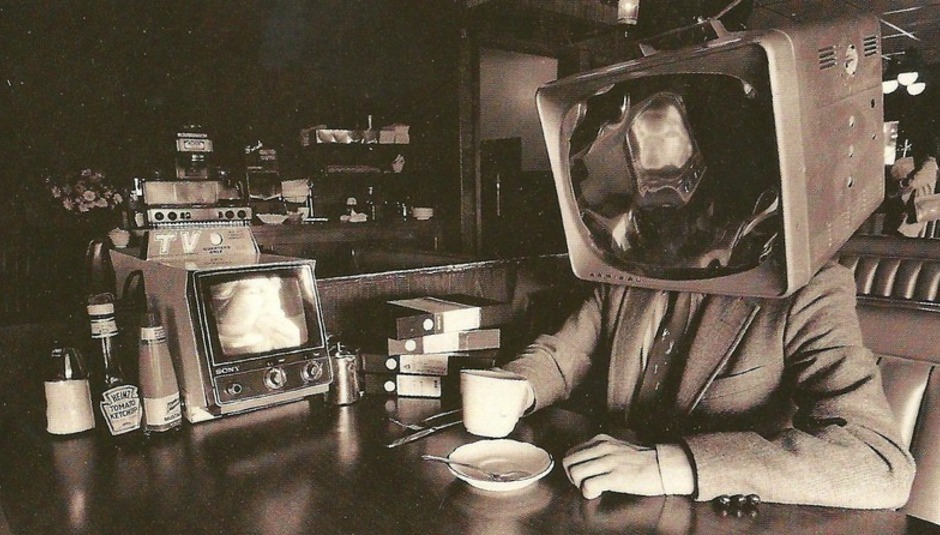Drowned In Sound; it knows what it’s on about when it comes to music. After all that’s why you’re here right? Therefore it’s probably fair to say you’re also quite clued up as well when it comes discovering the best new ditties the phantasmal underground world of music has to offer before it hits the mainstream. So answer me this: When you hear a track by one of your favourite artists used on TV – does it bother you? Probably not.
The act of synchronisation has now become an integral part of the modern musicians income. Gone are the days where it was seen as ‘selling out’ to have your music aid the flogging of wares by faceless conglomerates and now people are fighting in every corner of the industry to get their artists some of the cash and exposure that a decent sync deal can produce.
Over the years there have been a fair few arguments between bands and the brands who they don’t want their music associated with; Muse vs. Nescafe, VW vs. Beach House and, erm, Keane vs. the Tories. Late Beastie Boy Adam Yauch was so against the idea he even included the following in his will:
"Notwithstanding anything to the contrary, in no event may my image or name or any music or any artistic property created by me be used for advertising purposes."
The remaining Beasties actually took Monster energy drink to court for doing just that; offering a live set performed less than a week after Yauch’s passing by DJ Z-Trip as a free download on their website which included a 23 minute mash up of their hits.
However, these examples are now few and far between. I’m approached on a daily basis by bands informing me that their music is “Syncable” (first tip; never say this) and asking what I can do to land them one of these elusive deals.
So firstly; just who the hell am I and what gives me the right to tell you all this?
Well hello there, I’m Simon and I head up synchronisation & licensing at independent music publisher Sentric Music. Thanks to years of mollycoddling sync agents and music supervisors, (buying them drinks, asking them how their families are and being general comic relief when they ask me to send over a dubstep-jazz-fusion track within the next twenty minutes which needs to have specific lyrics about the storming of the Bastille for a Russian TV advert they’ve got a deadline for) I’ve been able to get music synced on TV/movies/games/adverts worldwide.
So if you’re a musician who wants to get your art in front of the millions who tune in to watch posh people sleep with each other and then argue about it on Made in Chelsea, or would like to get your hands on the money which can come from being featured a worldwide advert (anything between £50k - £250k depending on brand, band, term and other bits and bobs) then here are nine tips which will help you stand out to music supervisors over the hundreds of others sending them music on a daily basis.
Now there are a lot of ‘extra reading’ links in this post as I’ve gone into these points in far more detail before over on my own blog. If you’re taking this music making malarkey seriously and you want it to be your livelihood then read them all please. After all; what’s an evening’s homework in the grand scheme of things if it means you can quit your job and piss about on the guitar for the rest of your life?
1. Make your music actually sound good
Now this is the tricky one, as it requires you stepping back and listening to your music devoid of any bias. I’m sent an astonishing amount of music that simply sounds terrible - and this has absolutely nothing to do with personal taste as we’ve had plenty of music synced on big projects that I’d never personally listen to - this is purely about production quality.
Unless you make electronic music then it’s pretty much safe to say that bedroom recordings are rarely ever going to be at a high enough production standard to be syncable. Unless, of course, you’ve invested a lot of money turning your bedroom into a pint sized Abbey Road.
Simply listen to the music you hear on TV, films, games etc. and ask yourself; is your music as sonically sound as that? Honestly now? If it is then lovely, you may proceed.
Further reading: Different People Have Different Ears For Different Needs.
2. Have an instrumental version of every single song you’ve written
Every time you record a new track you should be getting an instrumental version done at the same time. Be sure to agree this with the studio/engineer at the beginning of your session as they might charge you a bit extra for this.
Sync agents and music supervisors LOVE THEM. It’s astonishing. Ask them about their fondest memories and there’s a 40% chance that receiving the instrumentals they need from labels/publishers/bands will rank higher than their children’s birthdays, small to medium sized lottery wins or getting married for the second time.
We’ve had artists lose out on five figure deals here due to them not having an instrumental version available so be sure to avoid this costly mistake.
Further reading: The Importance Of Instrumentals
3. Get your metadata spot on
When you send an MP3 to someone you need to make sure that when they play it in their media player of choice it tells them who they’re listening to, what they’re listening to, the genre of what it is they’re listening to and how to get in touch with whoever is responsible for what they’re listening to.
Pretty much every music supervisor I’ve come across uses iTunes so be sure all this information shows in that and you should be laughing. If you hate iTunes; stop moaning and wind your neck in, you’ve got to play by the music supervisors’ rules on this one.
I harp on about metadata so much that it will no doubt be included within my epitaph in some which way or form. At least all the spelling/grammar/capitalisation of the text on my gravestone will be right though eh? And not: “Here Lies [UNKNOWN ARTIST]”.
Further reading: Seven Steps To Metadata Utopia
4. Know your rights… Or at least know who has them
For your music to be synced on anything at all, two copyrights need to be cleared; the master copyright and the publishing copyright. Be sure you know who controls both of these and that they know how to get hold of one another in case they need to discuss clearing a track for a sync opportunity.
Stereotypically the master copyright is controlled by whoever paid for the recording. So traditionally this would be the record label, but this is now quite often the artist for most emerging bands.
The publishing copyright is controlled by the publisher (which is what we are here at Sentric Music), but bear in mind that a track might have a number of songwriters who may have different publishers – all of which would need to give permission in order for a sync to go ahead.
There are many examples of huge sync deals that have fallen through because the publishing copyright was split between a large amount of people and some chancer who had 2% of the track for contributing a forgettable throw away line couldn’t be found because he no longer lives in his mum’s attic (actual true story that – for a six figure deal as well).
5. Research the right people to approach
The synchronisation chain of command stereotypically looks like this (for a TV adert):
Brand -> Agency -> Music Supervisor -> Labels & Publishers -> Artists
Music supervisors usually have two types of filters where they source music from for their various projects:
Professional filters: These are the people they approach when they have a brief from the agency and need a selection of music. That, basically, is me; the publisher or label (could also include ‘sync agents’ who rep your music purely on a sync basis) who will look at the brief and filter through their catalogues to find the most suitable tracks.
Personal filters: These are the friends, blogs, magazines, radio stations, DJ’s etc. who have a knack of recommending music that tickles their fancy. Every so often they’ll come across a track which they absolutely love and if it works for the project they’re working on then they’ll do their research, find out who controls the rights and approach them about using the track.
For me to become a music supervisor’s professional filter takes plenty of time and effort. I first have to make the right approach and prove I’m worth my salt (why the artists I represent are of interest to them, what previous syncs I’ve licensed etc.) and then I have to constantly provide them with music that fits the briefs they fire across to me. If I send them music that doesn’t work (which people usually do when they’re pushing a priority artist who needs to recoup) then they’ll simply stop asking me to send music in the future. A music supervisor will always prefer an email saying “I’ve not got anything like that, sorry” over a playlist of tracks which don’t work and will ultimately waste their time.
Basically; you as an artist don’t personally fit into either of those two filters. So it’s your task to ensure you’re hitting the music supervisors via other people/mediums that do.
Put yourself in their place; would you want to chat directly to 10,000 artists/artist managers when you’re looking for a track for a certain project? Of course not; you want to chat to twenty people you trust who represent five hundred artists each to send over a handful of tracks from their catalogue.
So my tip here is:
Don’t approach the music supervisor; approach the people who approach the music supervisor.
Alternatively, hone your craft to the level where Drowned In Sound (or another one of their personal filters) give your latest EP 9/10 and they discover you from reading that, because they trust this fine, fine website and the ears of those who write for it.
6. Get your first impression perfect, it’s the biggest hurdle of them all
First impressions are astonishingly important – if you get it wrong at step one then you rarely get a second chance. I have a buggerload of bands here at Sentric to listen to on a daily basis so if you get in touch and are either rude or make it incredibly difficult for me to listen to your music then I’m going to move onto the next email in my ever expanding inbox.
The further reading link below is properly essential…
Further reading: 10 Tips On Proper Email Etiquette For Bands
7. Sell yourself by telling me why other people who are more important than you, like you
From my years of doing what I do I’ve reached the conclusion that hyperbole is a dangerous substance, which is potentially more addictive than chocolate-coated nicotine. Rarely do you come across an artist who uses it sparingly or wisely; they never just ‘dip their toes’ in the pool of praiseworthy adjectives available to them. As a consequence they end up with a number of paragraphs which, if I were to believe what was written as gospel, describe a catalogue of music which is so sonically perfect that it’s a wonder I don’t instantly burst into delirious bouts of hysteric tears upon hearing them due to their inherent beauty.
You think you’re good, and you should, but you’re biased. Instead I want you to tell me who else thinks the music you’re making is exciting. Those people who, by praising you, are actually taking a risk.
When I send music supervisors tracks for a project I’m not just sending them the MP3s – I’m telling them why these songs are exciting and why they should want to use them over the hundreds of other songs they’ve received for that project.
Things that turn them on include:
- Key radio airplay from national stations with big audiences
- Blog exposure from reputable sources such as the one you’re reading right now
- Notable live shows and tour supports (festivals are great and if you’ve supported someone with a big fanbase that’s also worth a mention)
- Previous syncs - if you’re music has been synced before then be sure to talk about this
Also at this point I should note that your online presence should be well maintained and pretty. I will check you out on Facebook so if it’s a mess and you’ve only got two ‘Likes’ (despite there being four of you in the band) then that’s going to be a turn off.
Further reading: My Perfect Demo Submission & Ten Things People In The Music Industry Want From Your Facebook Page.
8. Be patient
If you’ve done points 1-7 then lovely stuff; you’ve officially done everything you can and you’re now playing the waiting game and syncs can take a long time to come. There is one particular artist I work with where nothing landed for three years and within the space of a month three different syncs came in earning them more money in those four weeks than they’d ever earned throughout their career to that point.
So be patient. Please.
9. Once you’ve landed the sync - milk it for all it’s worth
Certain syncs can be gifts that keep on giving if you perform a few simple bits of housekeeping to exploit the exposure to it’s full potential. It’s astonishingly frustrating to see an artist receive a placement on a high profile TV show and then do nothing in terms of promotion/awareness to try and convert those viewers into record sales or simply just new fans.
Basic SEO (search engine optimization) is utterly key here. Put yourself in the viewers place; you’ve just heard a great song and you want to discover who it was. You weren’t quick enough to Shazam it (get your music on Shazam by the way) so what do you do? You Google the programme name and the lyric you heard hoping to find out what it was.
If you whack your song on SoundCloud with the lyrics and “as heard on [TV SHOW]” in the description with a link to buy then you’re going to capitalise on all those impulse purchases.
Further reading: You’ve Finally Got That Sync… Now What?
And I’m done. Quite the read I know, but I hope you took something from it. Please do send all thoughts my way on twitter.
And for more information on how I can push your music for sync then check out www.sentricmusic.com























